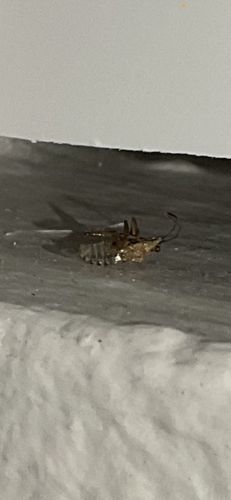Antlion larva (or 'doodlebug')
Scientific Name: Myrmeleontidae (larva)
Order & Family: Neuroptera, Myrmeleontidae
Size: Larvae typically range from 0.5 to 1.5 cm (0.2 to 0.6 inches) in length.

Natural Habitat
Sandy or dusty areas, often under overhangs, eaves, or in loose soil where they can build pits to trap prey. They prefer dry and protected environments.
Diet & Feeding
Predatory. The larvae dig conical pits in loose soil and wait at the bottom for small insects, primarily ants, to fall in. They grab their prey with their large, sickle-shaped jaws and suck out their bodily fluids.
Behavior Patterns
The most distinctive behavior is the construction of a conical pitfall trap. The larva backs into the sand, using its abdomen as a plow and its head and jaws to fling sand aside, creating a pit. It then buries itself at the bottom, leaving only its jaws exposed, waiting for unsuspecting prey. They are largely sedentary once a pit is established. They undergo complete metamorphosis, eventually pupating in a spherical cocoon under the sand and emerging as winged, adult antlions which resemble damselflies.
Risks & Benefits
No risks to humans; they do not bite or sting. They are beneficial insects as they help control ant populations and other small ground-dwelling insects, making them a natural form of pest control in their ecosystems.
Identified on: 11/15/2025